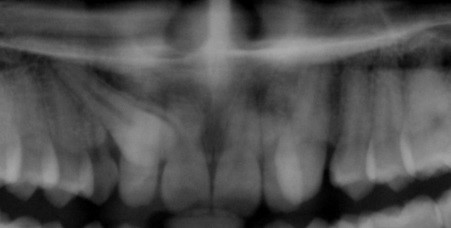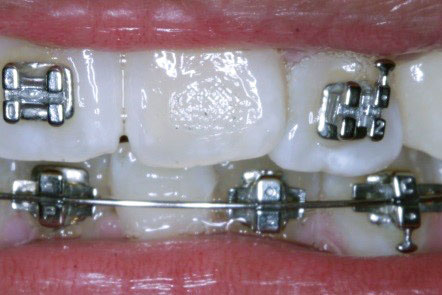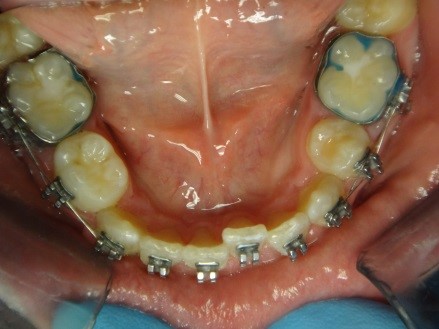LENGTH OF TREATMENT
“How long will treatment be?” is one of the first questions we often hear. There is no one good answer to this.
Because each person is evaluated and treated as an individual, we provide an ESTIMATE OF TREATMENT TIME based on what needs to be done in each case, how far the teeth may need to move, and the tools required to accomplish the task.

Unfortunately, insurance companies have placed a stigma on how long orthodontic treatment should take. Again, this is related to a cookie-cutter approach, which is not the best way to approach any treatment since each patient is an individual. We can’t just slap braces on teeth and expect to be done in X amount of time because it should work the same for everybody. This is one of the biggest misconceptions when patients seek orthodontic treatment.
The many factors that influence the length of treatment can be broken into uncontrollable factors and controllable factors as shown below.
FACTORS THAT INFLUENCE THE LENGTH OF TIME IN TREATMENT
Uncontrollable Factors Controllable Factors
Genetics
Biology Keeping recommended appointments
Cooperation wearing adjuncts
Breakage

Uncontrollable factors are directly related to genetics and biology. For instance, in the case of growth modification with a facemask, expander, or headgear, our goal is to encourage growth and give it every opportunity to happen. As much as we would like to direct treatment, we cannot control the rate of growth or the final amount. Genetics will control how fast and how far. What we CAN do is improve the rate and the amount in successful cases but cannot exceed biologic limits except in cases coordinated with jaw surgery.
 Tooth movements are also dictated by biology. We have nine-year-olds with all of their adult teeth, including their twelve year molars, and we have adults that still have baby teeth. Averages exist because some children will get their teeth at a younger age while others will get them at an older age. This is an example of how individual biology will affect tooth movement and influence the length of time in treatment. We can even see variations like this in different areas of the mouth on the same patient! Furthermore, individual biology will affect WHERE the teeth will erupt.
Tooth movements are also dictated by biology. We have nine-year-olds with all of their adult teeth, including their twelve year molars, and we have adults that still have baby teeth. Averages exist because some children will get their teeth at a younger age while others will get them at an older age. This is an example of how individual biology will affect tooth movement and influence the length of time in treatment. We can even see variations like this in different areas of the mouth on the same patient! Furthermore, individual biology will affect WHERE the teeth will erupt.The second category which affects length in treatment is the controllable factors. These can influence treatment time in either positive or negative manners. The patient often has the ability to directly affect their treatment time.
 The first factor is keeping regular appointments. For obvious reasons, treatment can’t progress unless the doctor can make the continuing adjustments. We encourage our patient to schedule their next appointment while at the current one. This prevents the possibility of forgetting to call back to schedule and keeps treatment progressing as smoothly as possible.
The first factor is keeping regular appointments. For obvious reasons, treatment can’t progress unless the doctor can make the continuing adjustments. We encourage our patient to schedule their next appointment while at the current one. This prevents the possibility of forgetting to call back to schedule and keeps treatment progressing as smoothly as possible. Most treatments rely on patient cooperation wearing adjuncts, such as bites plates or elastics or wearing the aligners themselves. This is the second controllable factor. Understanding the biology of tooth movement will help our patients understand how this affects the length of time in treatment. Light, continuous forces are needed to make sure the teeth are moving in the correct manner. We often say that wishing doesn’t make it happen. Lack of wear of these items is one of the single most common reasons treatment times are extended. If a patient doesn’t wear their appliances, nothing happens from one visit to the next and 6 to 8 weeks are wasted, extending treatment time. For this reason, we stress making sure you are following the doctor’s instructions.
Most treatments rely on patient cooperation wearing adjuncts, such as bites plates or elastics or wearing the aligners themselves. This is the second controllable factor. Understanding the biology of tooth movement will help our patients understand how this affects the length of time in treatment. Light, continuous forces are needed to make sure the teeth are moving in the correct manner. We often say that wishing doesn’t make it happen. Lack of wear of these items is one of the single most common reasons treatment times are extended. If a patient doesn’t wear their appliances, nothing happens from one visit to the next and 6 to 8 weeks are wasted, extending treatment time. For this reason, we stress making sure you are following the doctor’s instructions.  The third controllable factor is breakage. Each time breakage occurs, treatment is set back in a variety of different ways and length of time in treatment is extended. For instance, if a patient eats candy and breaks a bracket, the bracket is no longer attached to the tooth so the wire is not delivering force and movement doesn’t occur. If you wait six weeks to fix it, it is six weeks of wasted time where the tooth is not moving. We encourage our patients to call immediately when breakage occurs so that we may schedule the repair.
The third controllable factor is breakage. Each time breakage occurs, treatment is set back in a variety of different ways and length of time in treatment is extended. For instance, if a patient eats candy and breaks a bracket, the bracket is no longer attached to the tooth so the wire is not delivering force and movement doesn’t occur. If you wait six weeks to fix it, it is six weeks of wasted time where the tooth is not moving. We encourage our patients to call immediately when breakage occurs so that we may schedule the repair.  Taking breakage one step further, what if the bracket is off and in the time it is off, the tooth not only doesn’t move in the direction we want it to, but also moves in a way we don’t want it to because it is not be held by the wire? Now we have it will take to step back in wire size and correct the unwanted movement. In this way, breakage can add MONTHS to treatment time. It will also prevent us from progressing at the repair appointment, again adding to the treatment time.
Taking breakage one step further, what if the bracket is off and in the time it is off, the tooth not only doesn’t move in the direction we want it to, but also moves in a way we don’t want it to because it is not be held by the wire? Now we have it will take to step back in wire size and correct the unwanted movement. In this way, breakage can add MONTHS to treatment time. It will also prevent us from progressing at the repair appointment, again adding to the treatment time.Part of our job is to encourage our patients to help us make sure their orthodontic experience is the best it can be to achieve our goals of a beautiful, functional smile. We will provide you the tools to make this happen as well as guidelines to ensure that treatment progresses as it should.
To schedule an appointment with our orthodontist in Sunbury, Ohio, and learn more about your treatment and length of treatment time, call Renick Orthodontics today at 740-936-5003.


 700 W. Cherry Street, Suite C, Sunbury, OH 43074
700 W. Cherry Street, Suite C, Sunbury, OH 43074 740-936-5003
740-936-5003


